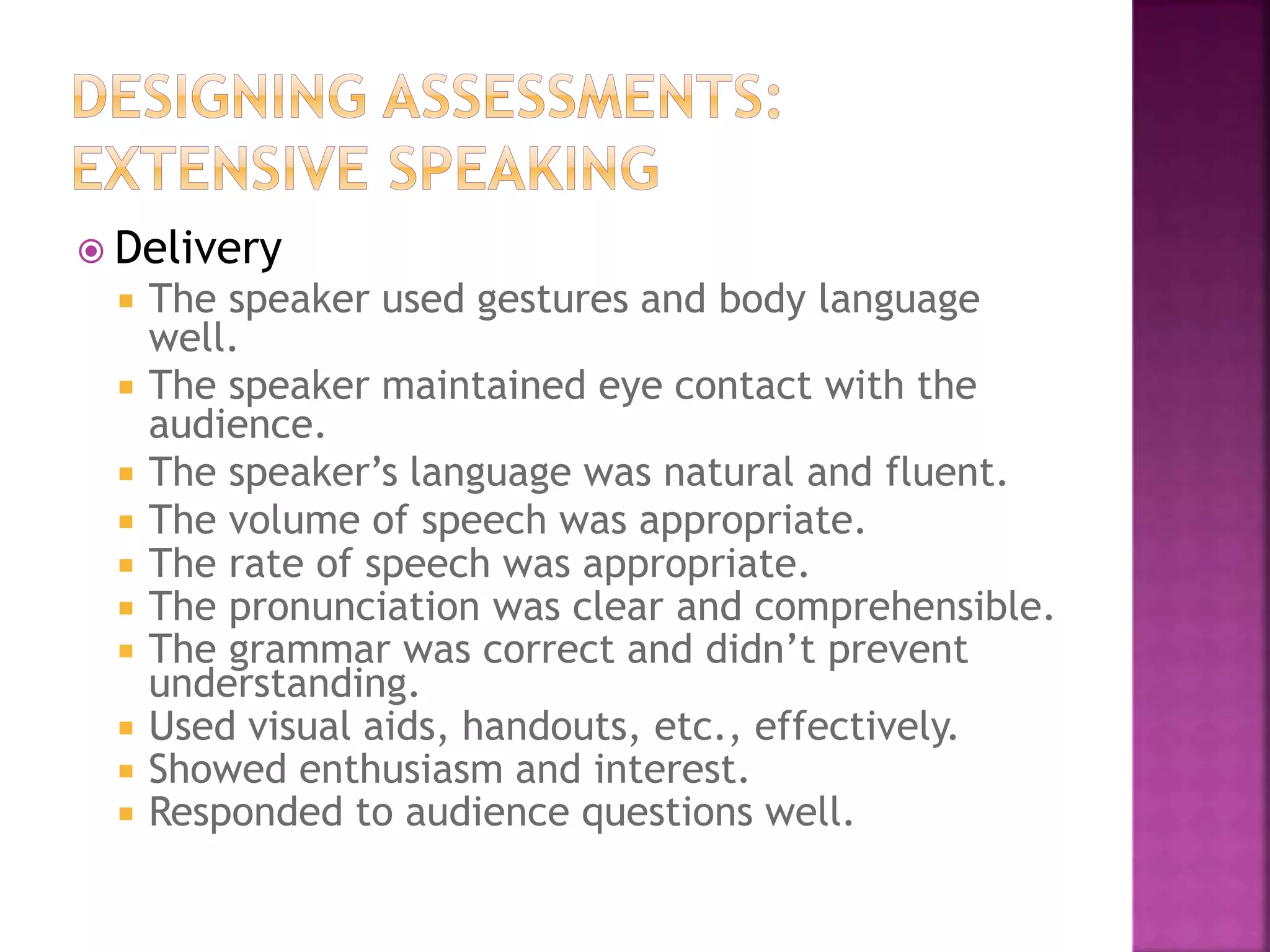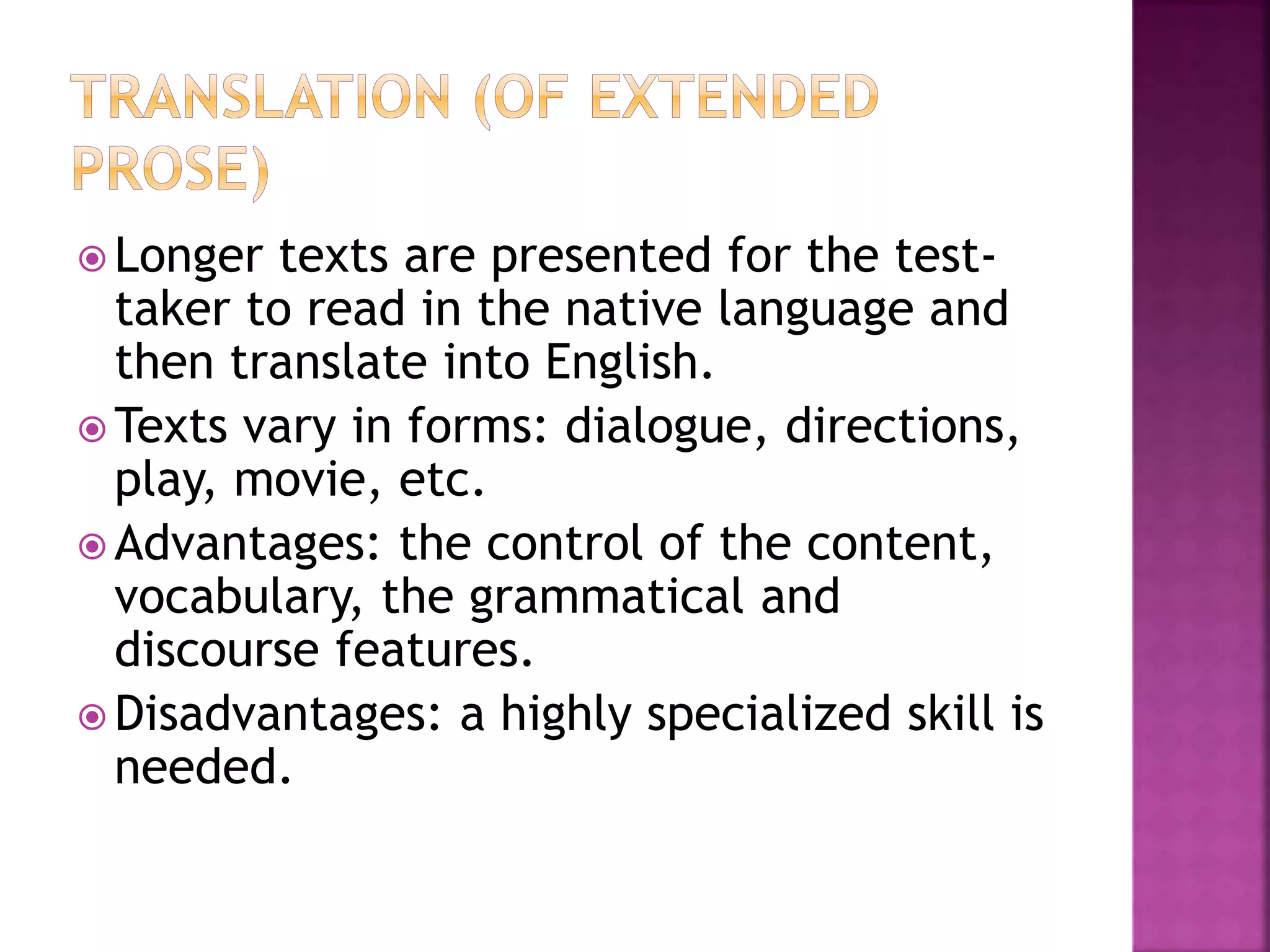The document discusses various tasks and techniques for assessing speaking skills in language learners, focusing on imitative speaking, intensive speaking, and oral interactions. It highlights the scoring systems and criteria used in tests like PhonePass and TOEFL, emphasizing the importance of task design and scoring reliability. Additionally, it explores authentic assessment methods and the balance between practical scoring and effective communication in real contexts.

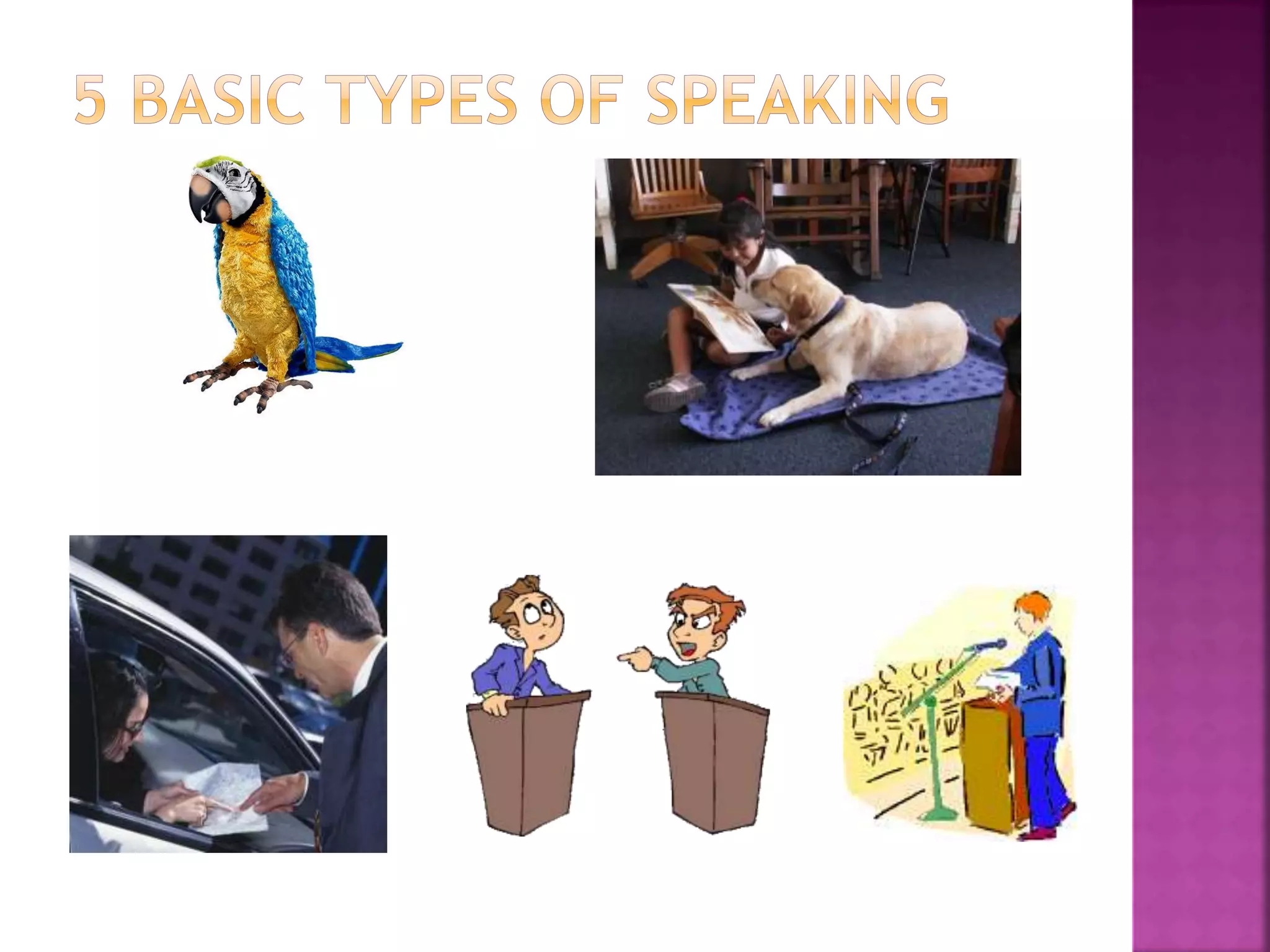
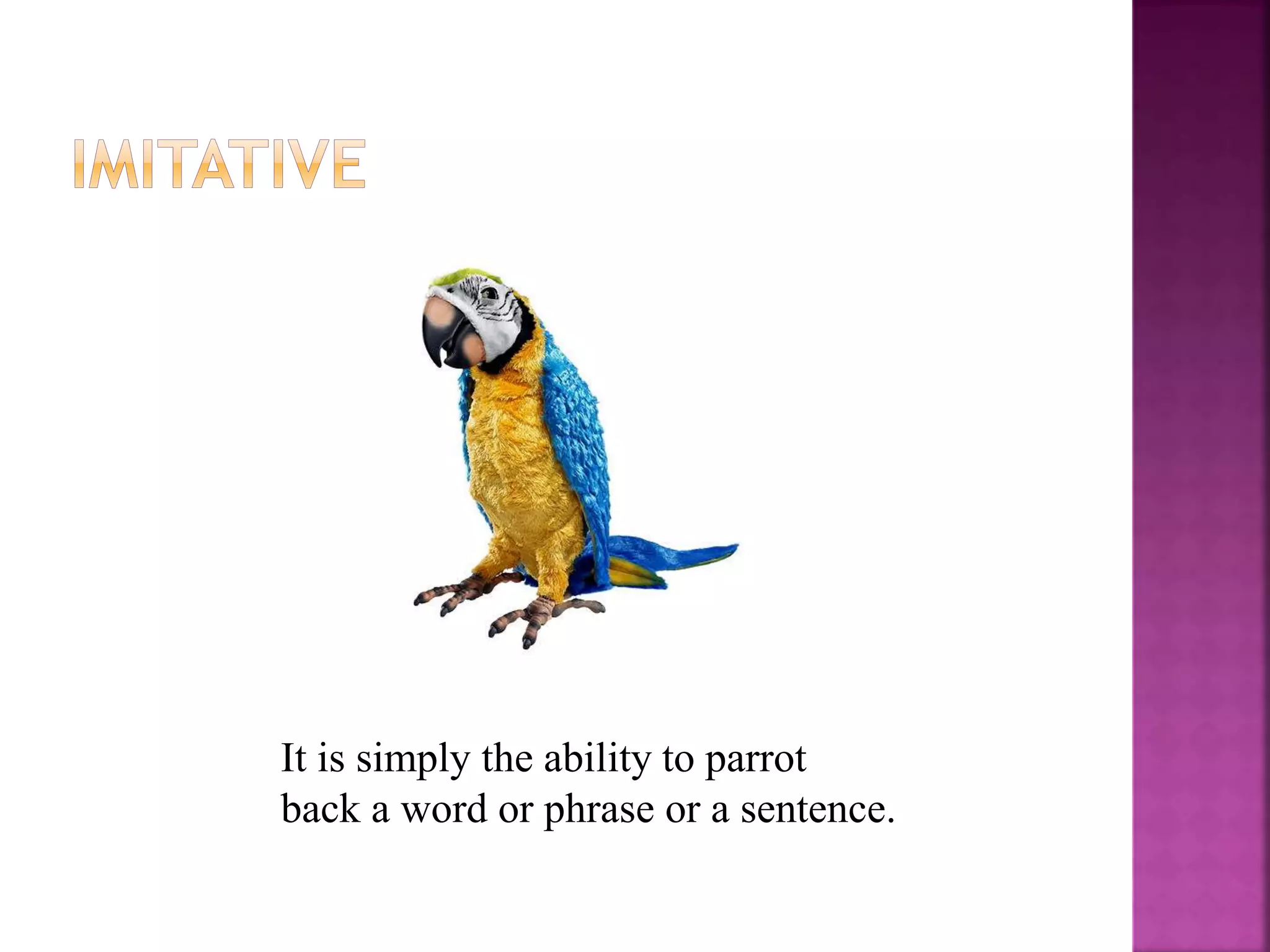

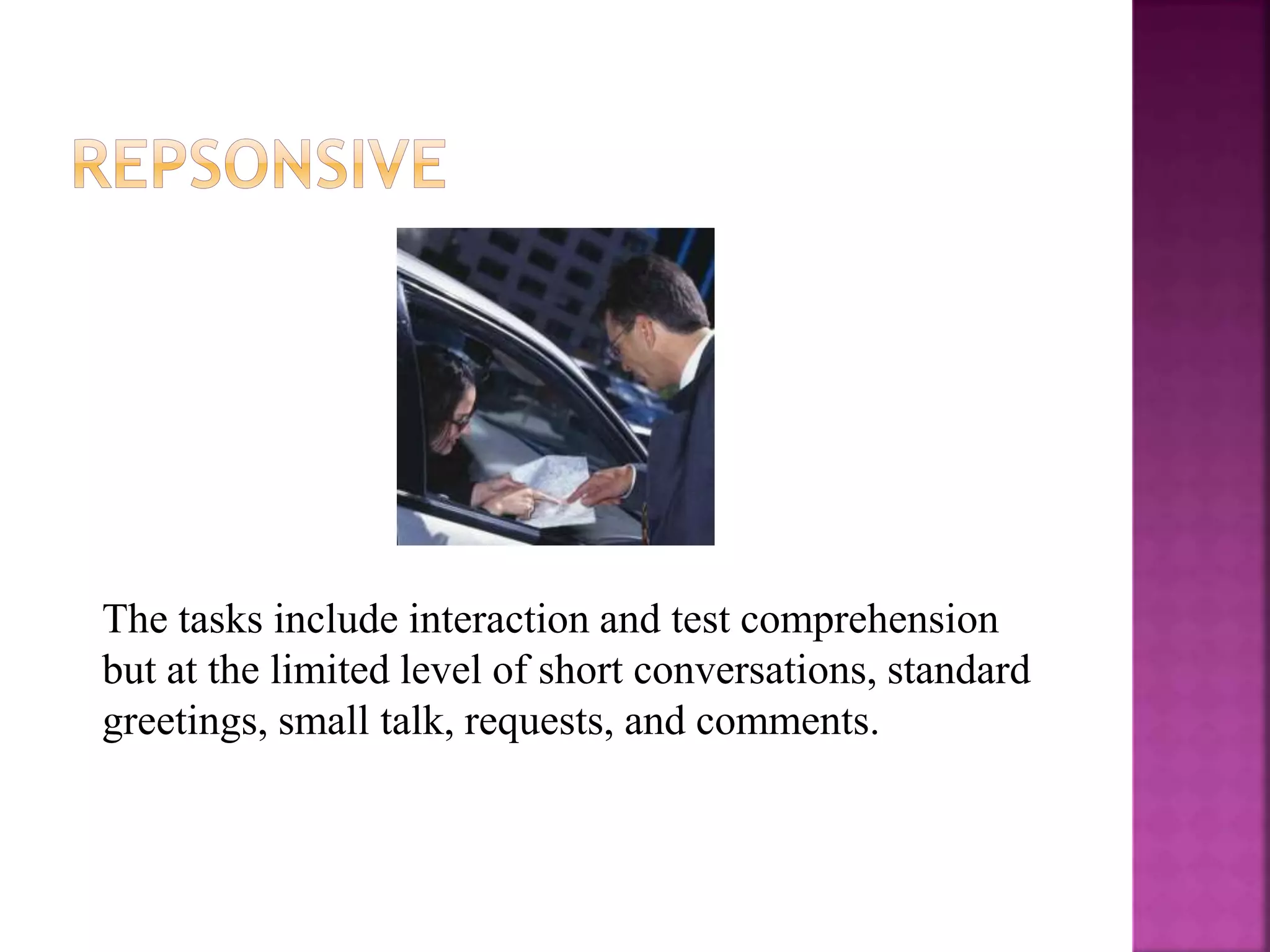


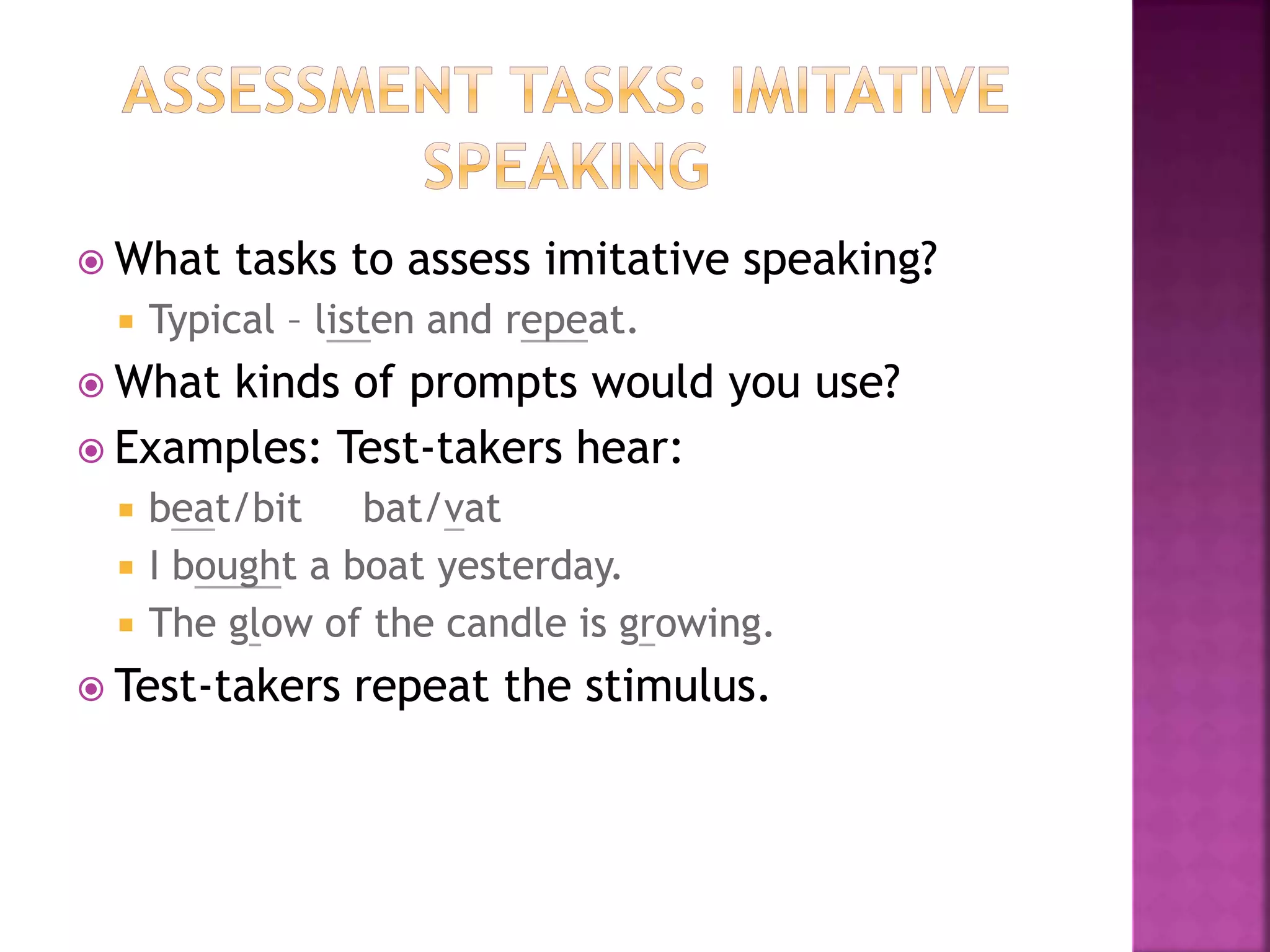

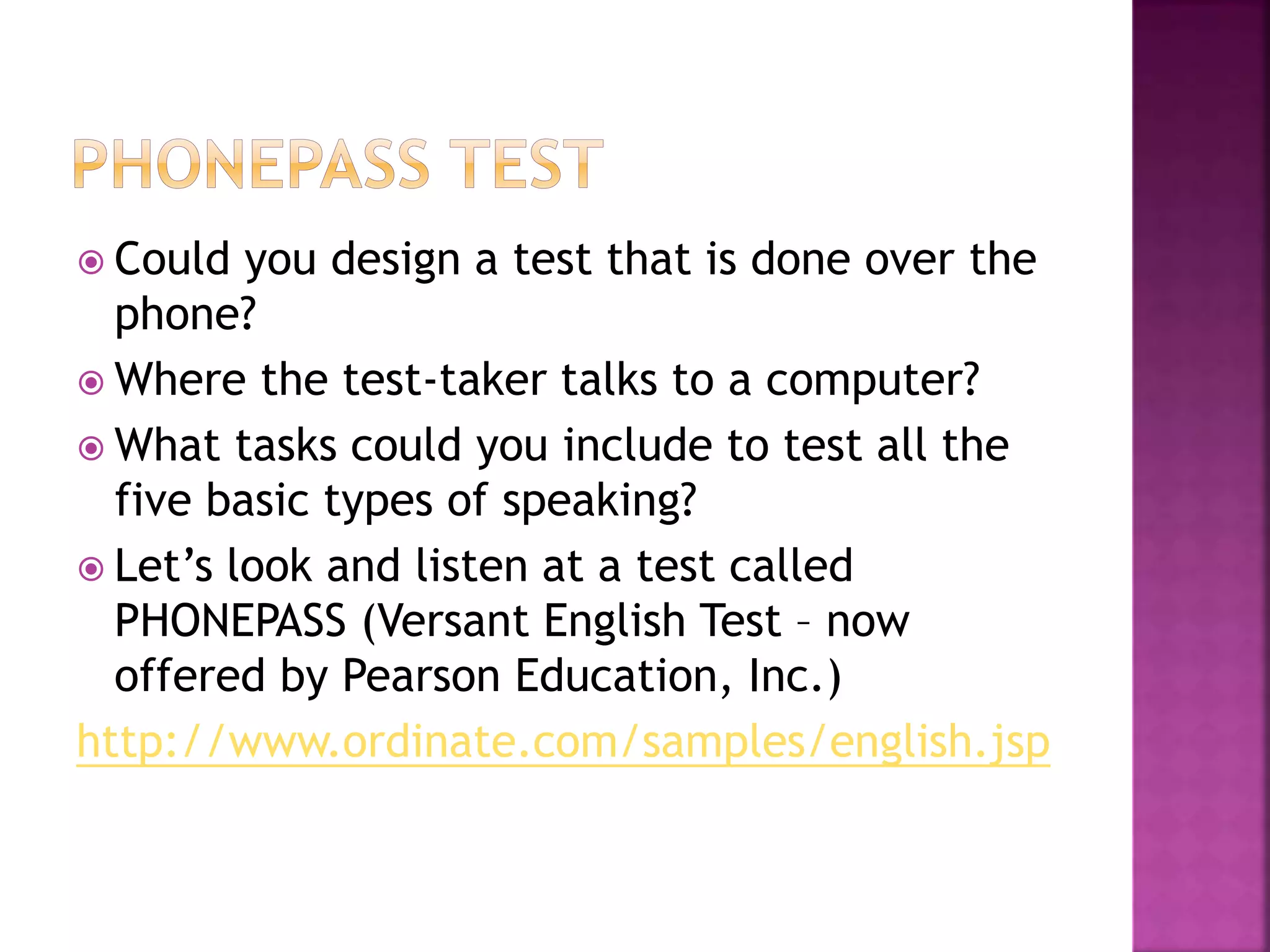



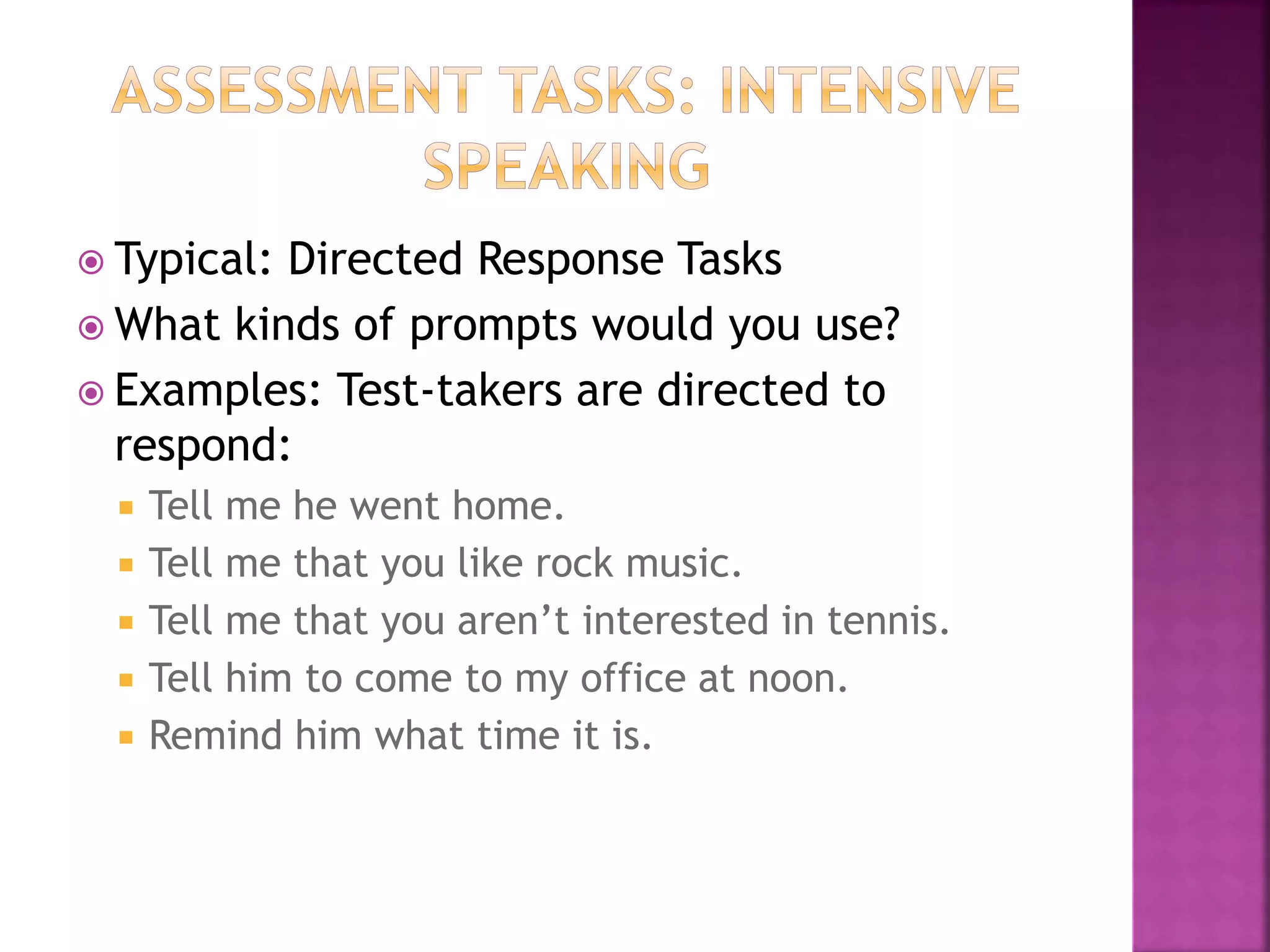




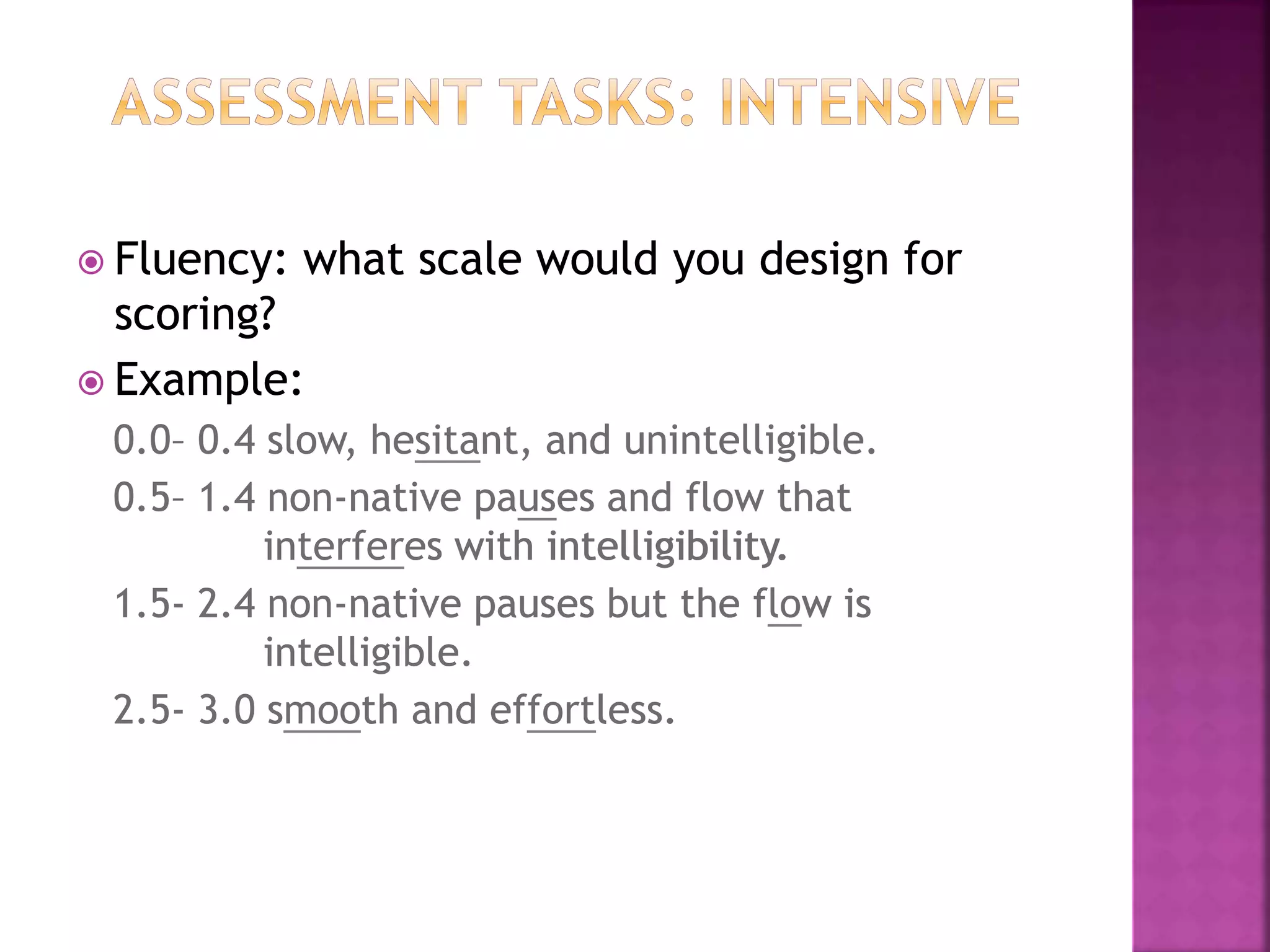


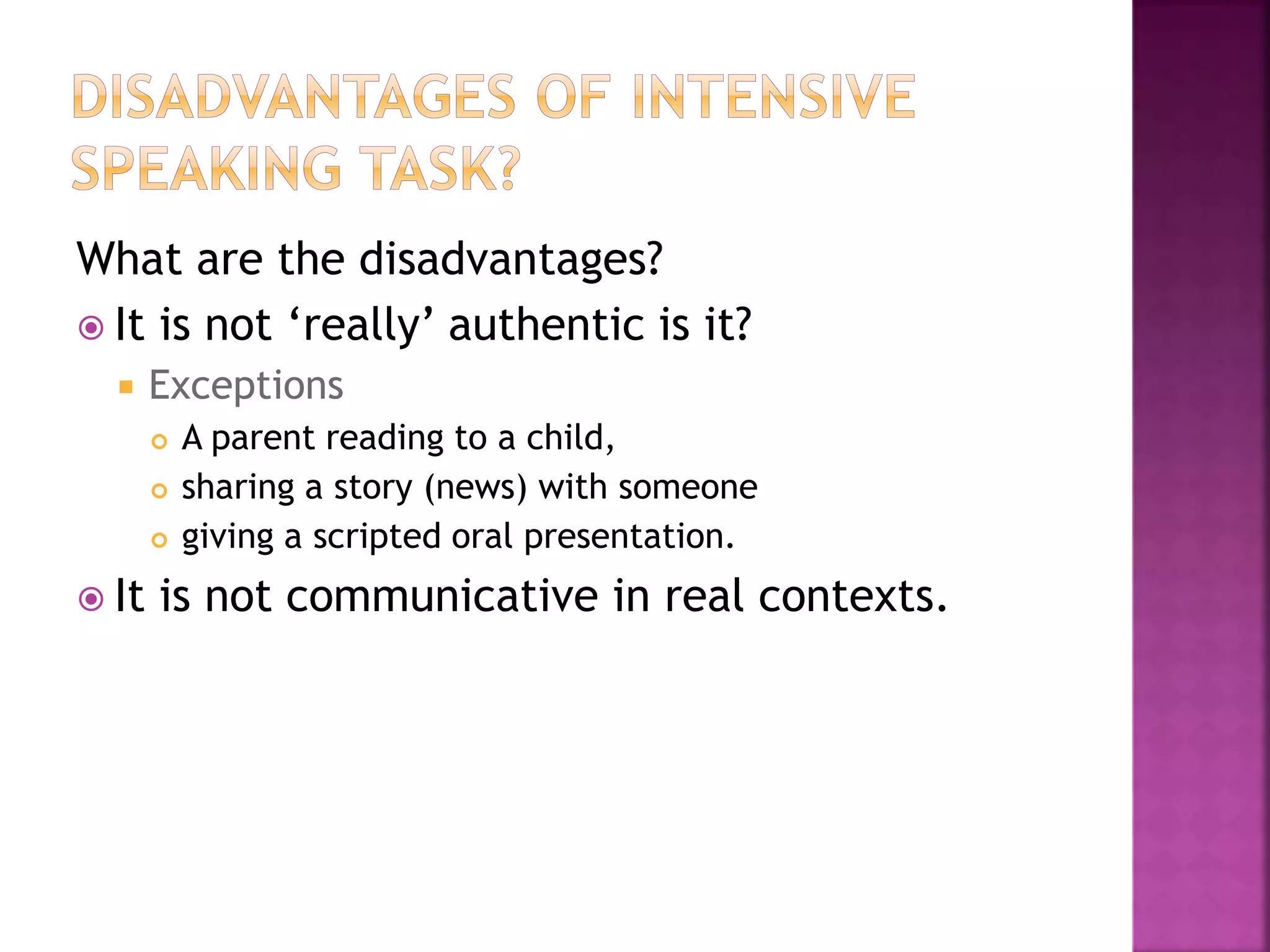
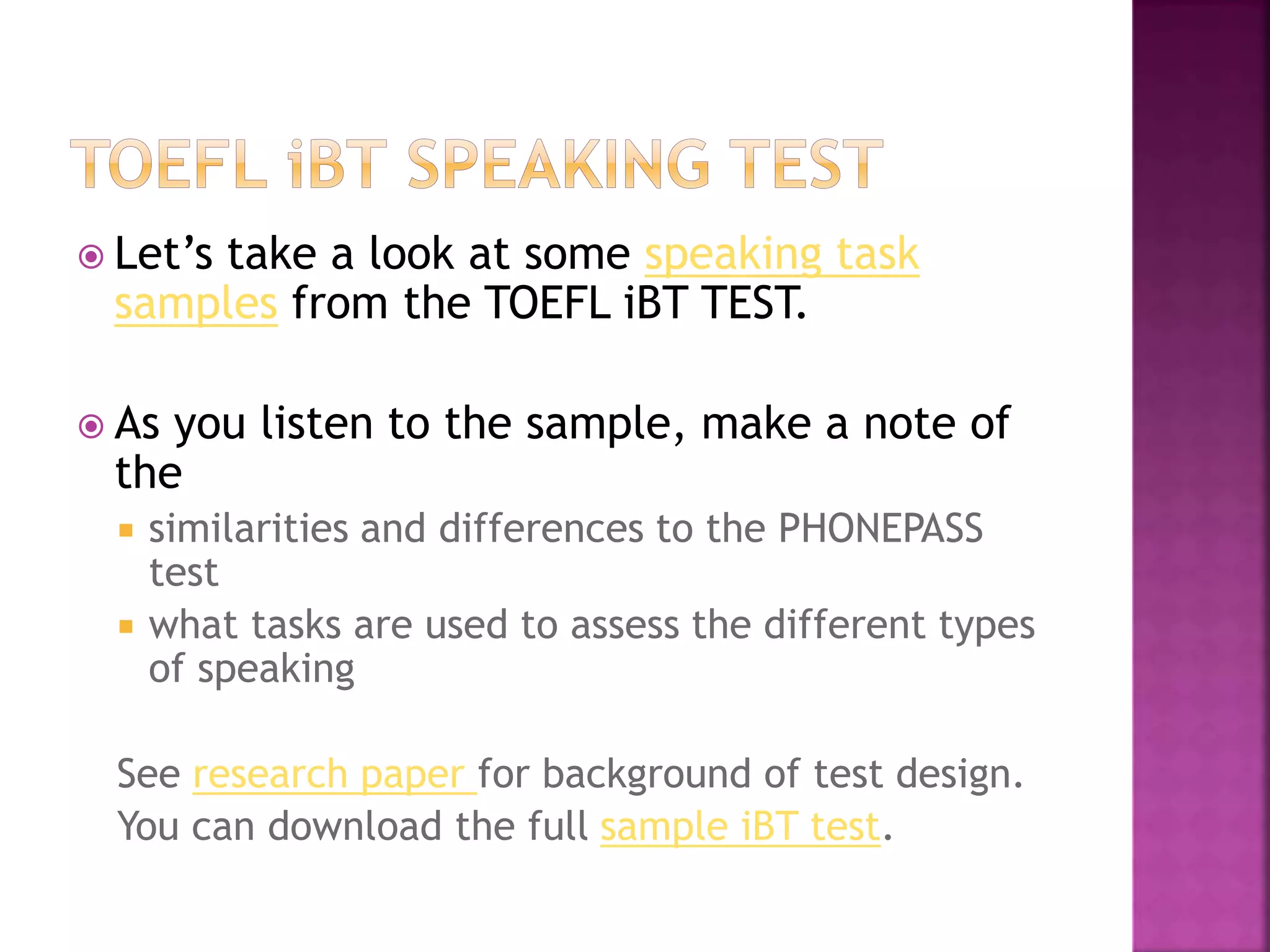

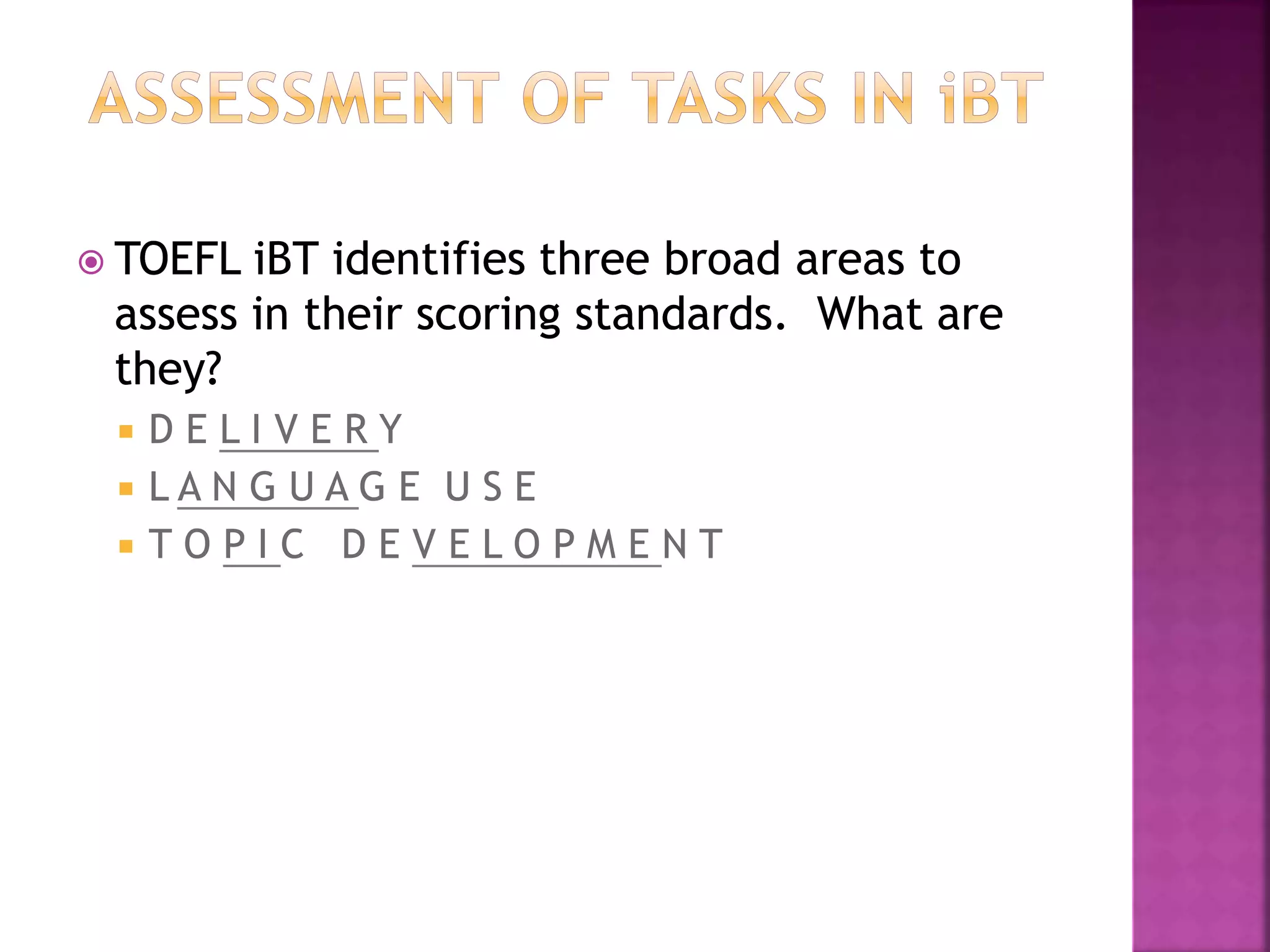

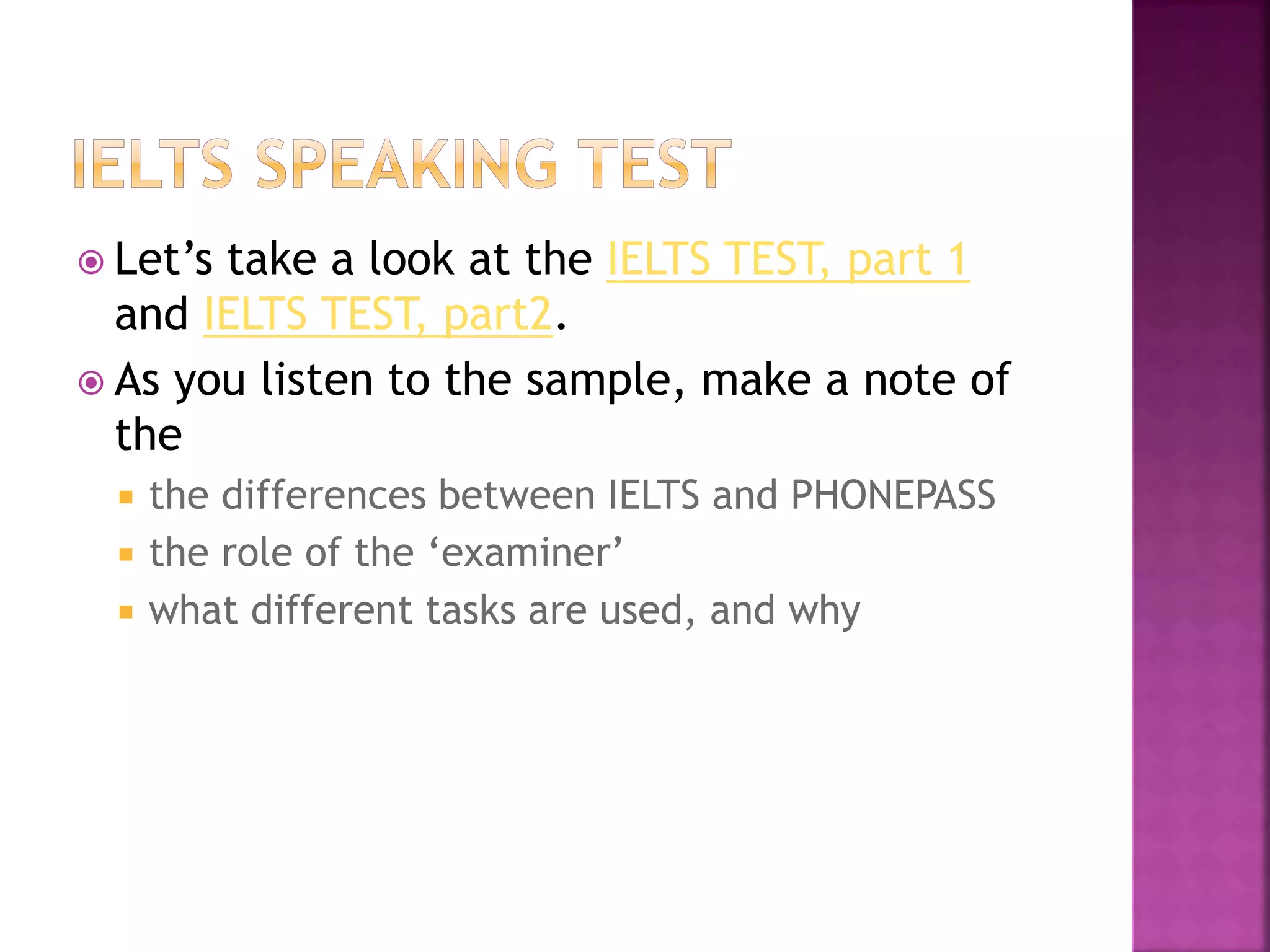


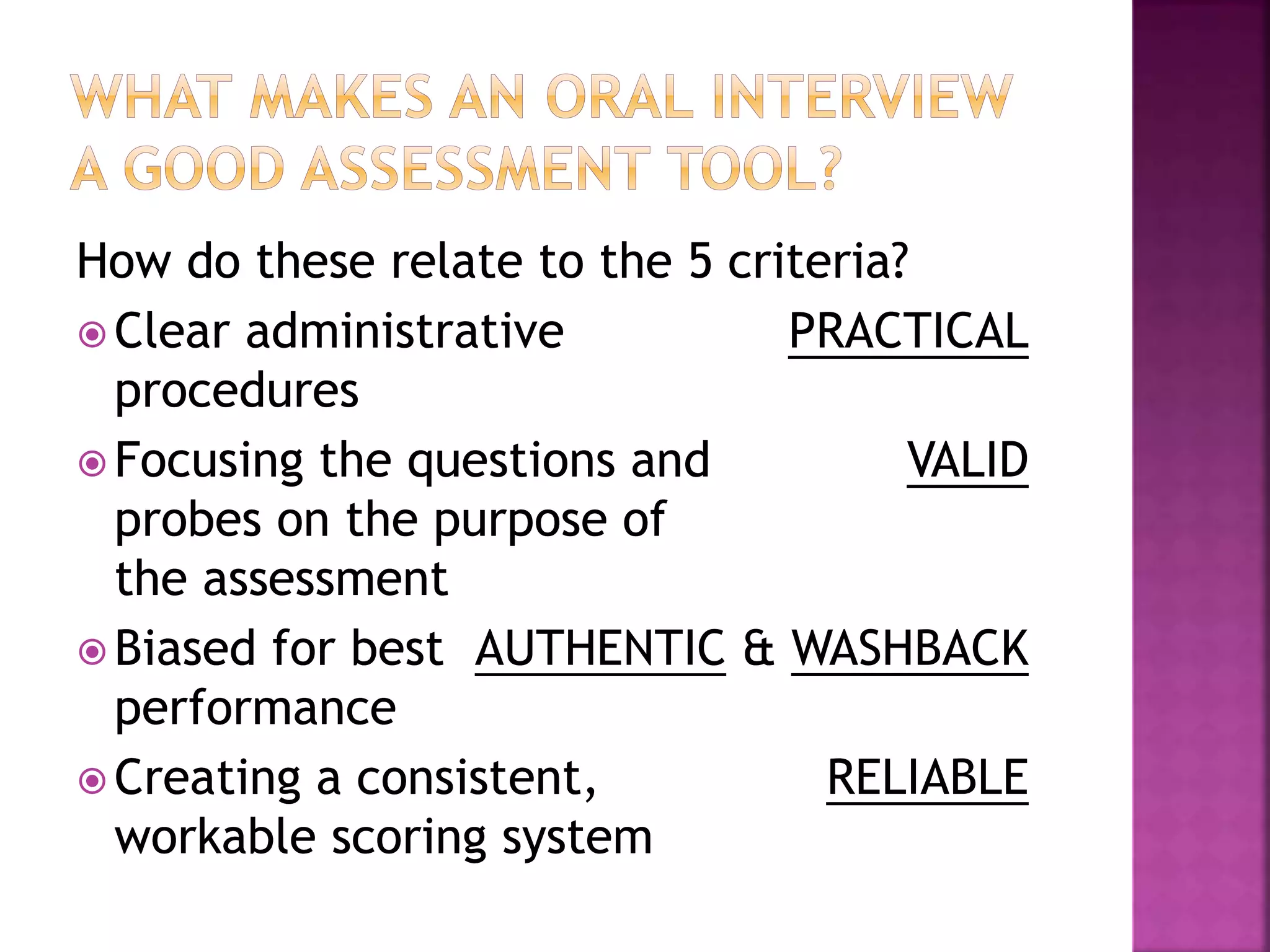
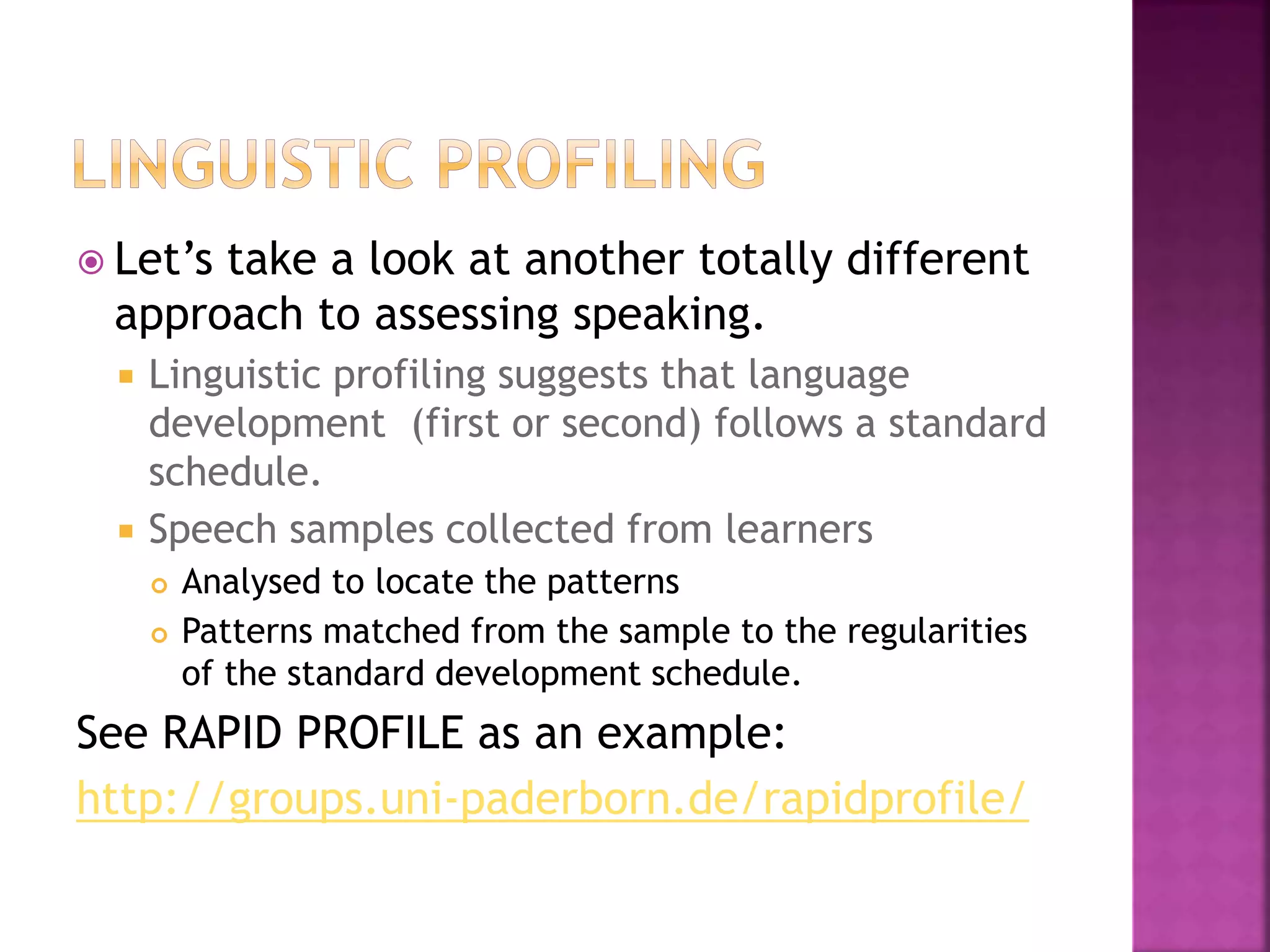







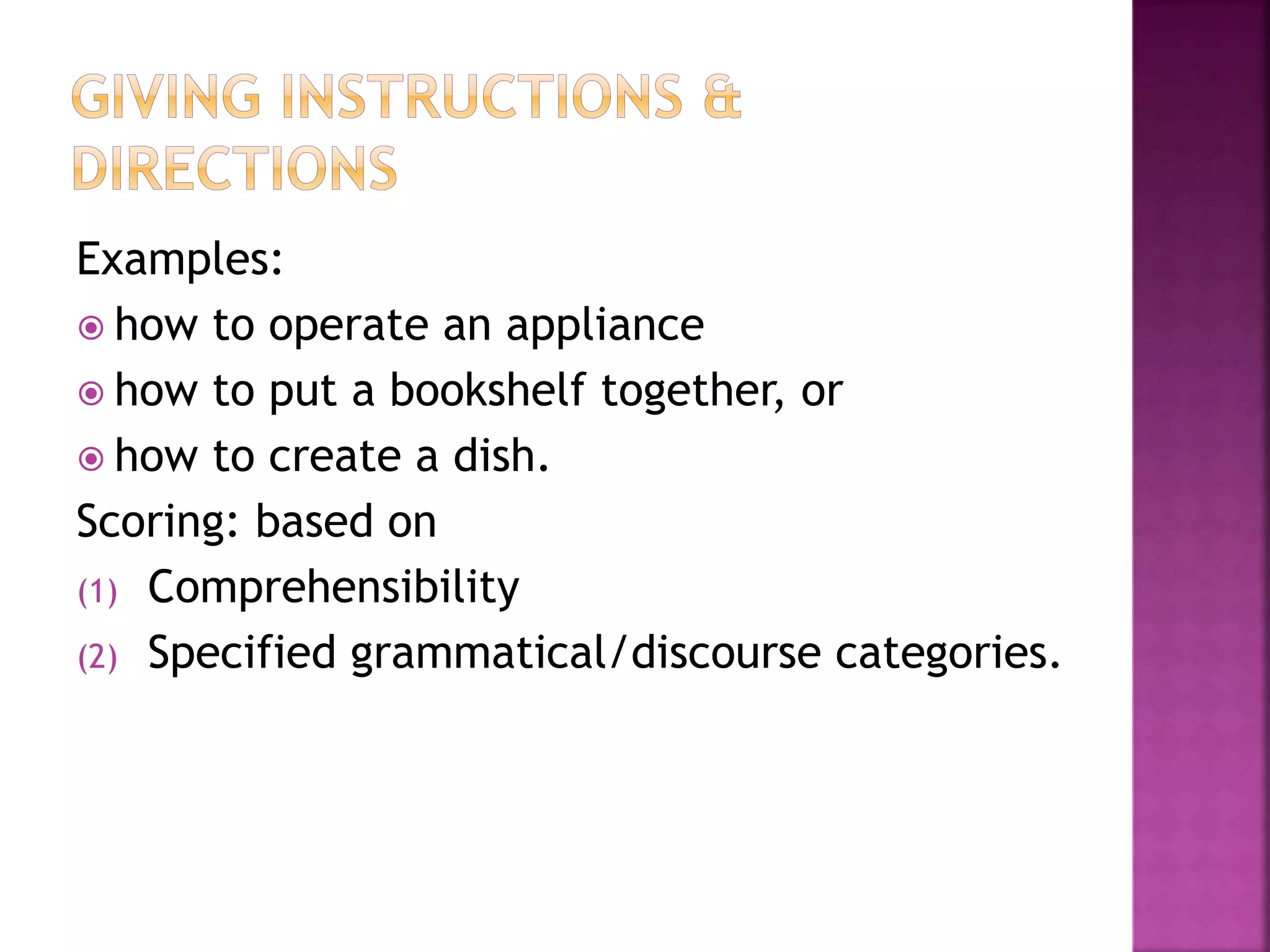

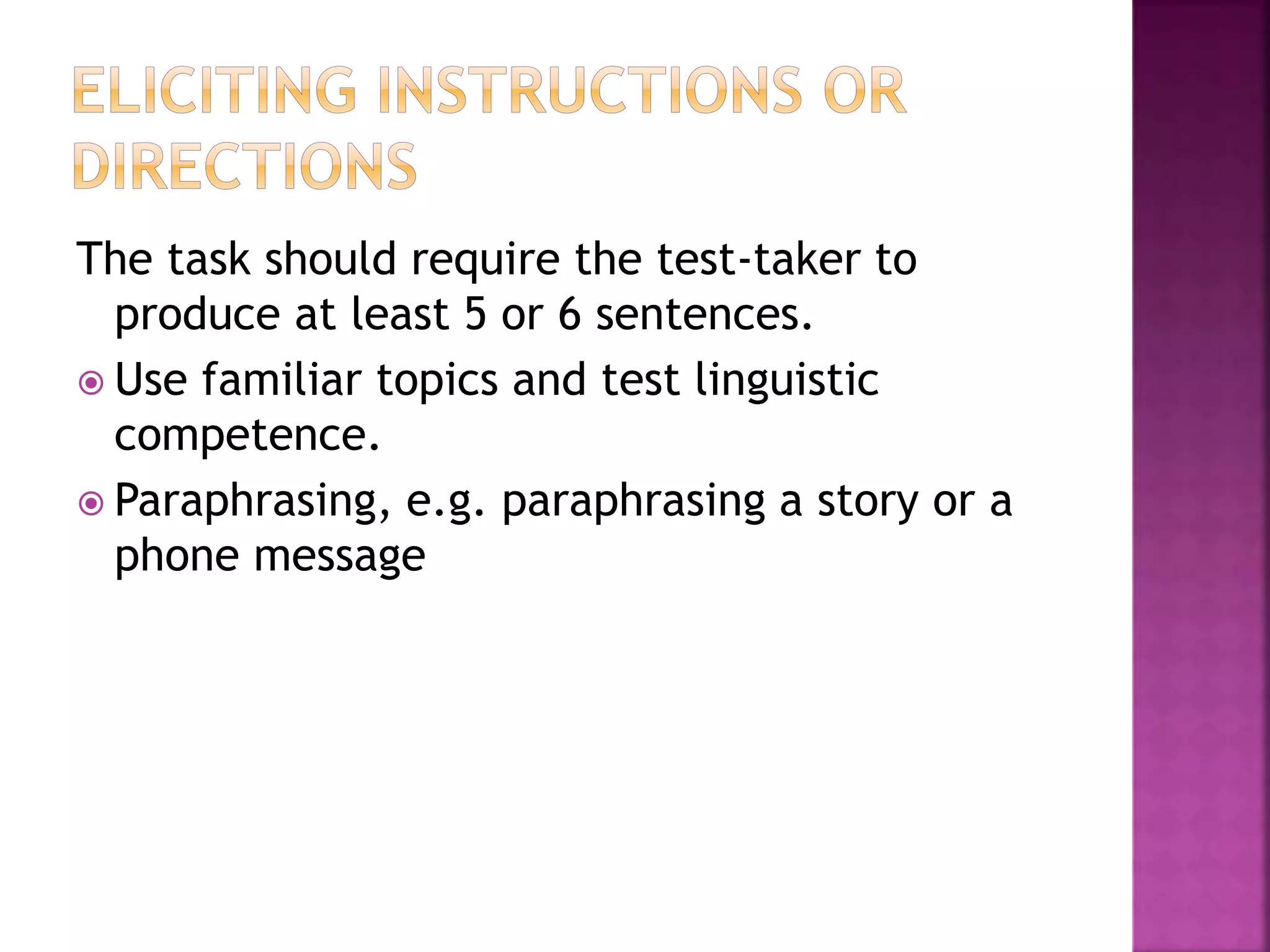





![3. Probe:
What are your goals for learning English in this
program?/Describe your academic field to me.
What do you like or dislike about it?/Describe
someone you greatly respect, and tell me why you
respect that person./If you were [president, prime
minister] of your country, what would you like to
change about your country?](https://image.slidesharecdn.com/languageassessment-assessingspeakingwithpicturesbyefllearners-151225052157/75/Language-Assessment-Assessing-Speaking-byEFL-Learners-47-2048.jpg)







